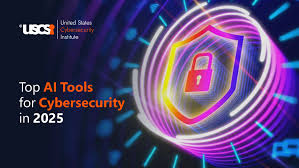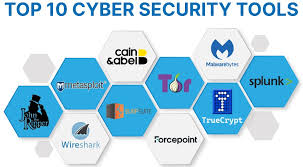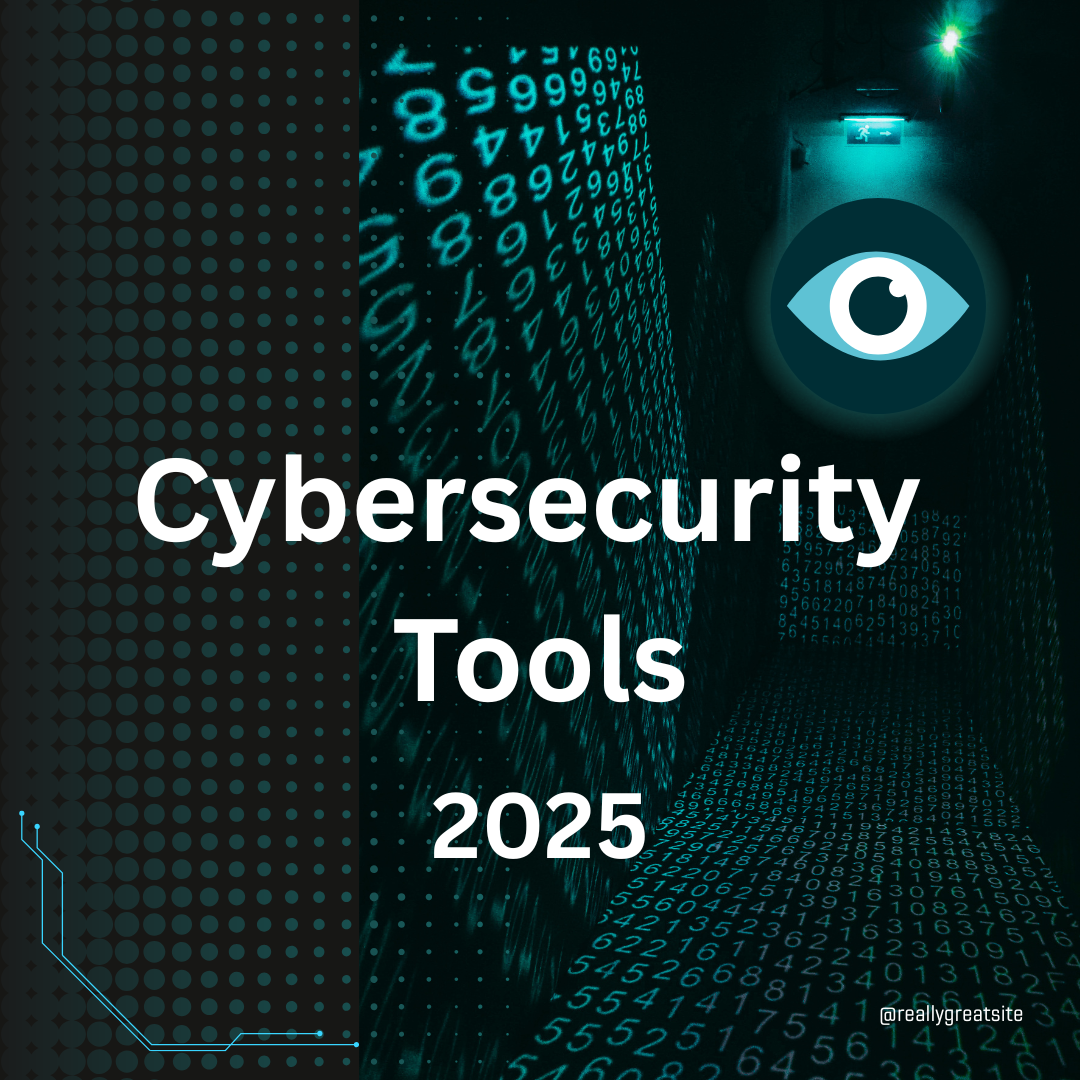Introduction
Consider this: You’re enjoying your coffee and going through your emails on a normal Tuesday morning in 2025 when all of a sudden your screen freezes. You see a ransom note saying that hackers have locked your files and are requesting thousands of cryptocurrency. Does that sound like a nightmare? Cybersecurity Ventures estimates that the annual damages from cybercrime will increase from $3 trillion in 2015 to $10.5 trillion by 2025. That is more than just a statistic; it serves as a warning to everyone, from CEOs protecting trade secrets to teenagers sharing memes.
The good news is that you don’t need to be a victim. Smarter, faster, and easier to use than ever before, the top cybersecurity tools for 2025 combine AI intelligence with intuitive user interfaces to fend off threats. These digital defense tools are your shield, whether you’re a business owner protecting cloud data, a remote worker protecting home networks, or a student avoiding phishing scams.
We’ll look at the best choices in each category, ranging from encryption software that transforms your data into an unbreakable code to antivirus apps that instantly eliminate malware. We’ll discuss features, benefits, drawbacks, and advice for making an informed decision while maintaining a sense of humor because, after all, who says staying safe can’t be enjoyable? Now is the time to take action and make potential hacks “not today, cyber creeps!”
Why Cybersecurity Tools Matter
Cybersecurity tools are not optional in a world where your smart fridge could potentially be compromised (yes, IoT attacks have increased by 300% since 2020). These online security solutions act like a digital bouncer, kicking out threats before they crash the party. Ignoring people of all ages—from young children learning online to elderly people banking online—is like leaving your front door open.
Consider this: according to data from the University of Maryland, cyberattacks occur every 39 seconds. By identifying irregularities, preventing malware, and encrypting private data, cybersecurity tools reduce risks. Everyone can use them thanks to their user-friendly interfaces; they’re not just for tech enthusiasts. Additionally, tools like firewalls and VPNs make sure your home office isn’t a hacker’s paradise, especially with the rise in remote work.
It’s funny to think that without these digital defense tools, your data could be on the dark web before you can say “password123.” But really, spending money on cybersecurity tools saves money—according to IBM, breaches cost companies an average of $4.45 million. They safeguard peace of mind and privacy for individual use. Internal connection: For additional information on new dangers, see our guide to cyber threats.
By 2025, AI-powered tools will have changed the game by anticipating attacks. These tools make the digital world safer by keeping up with threats, whether you’re protecting corporate secrets or family photos. Let’s investigate their motivations.

Key Features of Cybersecurity Tools
Choosing a cybersecurity tool is similar to choosing a superhero sidekick; you want someone who is dependable, strong, and won’t abandon you in an emergency. Top features in 2025 center on integration, usability, and proactive protection. Firewalls shouldn’t be dull, so here’s the breakdown with a little humor.
Real-Time Threat Detection The best cybersecurity tools use AI to spot malware instantly, like a vigilant guard dog that barks at shadows. Look for threat detection systems scanning emails, downloads, and web traffic 24/7. Example: Tools like CrowdStrike Falcon analyze behavior patterns to halt zero-day attacks.
Multi-Device Compatibility From phones to laptops, cybersecurity tools should cover all gadgets. Cross-platform support ensures seamless protection— no more “oops, my tablet’s vulnerable” moments.
User-Friendly Interfaces Not everyone’s a hacker (thankfully). Intuitive dashboards with alerts and one-click fixes make these tools approachable for all ages. Bonus: Educational tips to avoid common pitfalls, like clicking shady links.
Encryption and Privacy Features Encryption software turns data into gibberish for prying eyes. Features like end-to-end encryption in VPNs keep your online activities private, perfect for public Wi-Fi warriors.
Automated Updates and Backups Lazy? Good—top tools auto-update to patch vulnerabilities and backup data, preventing ransomware regrets.
Integration with Other Systems Cybersecurity tools shine when they play nice with email, cloud storage, and browsers. LSI: cyber protection software, firewall applications.
These features ensure cybersecurity tools aren’t just reactive but predictive, keeping you one step ahead of cyber villains.
Read more: Best Cybersecurity Tools to Learn in 2025
Best Antivirus Cybersecurity Tools
Your cybersecurity arsenal’s front-line troops are antivirus programs, which eliminate viruses before they have a chance to spread like rabbits. By 2025, they’ll be more intelligent and employ AI to anticipate and stop problems. Let’s highlight the best, including their benefits, drawbacks, and age-appropriateness.
Norton 360: All-Round Protector
Norton 360 tops lists for comprehensive coverage. It scans for malware, blocks phishing, and includes a VPN. Price: $49.99/year for 3 devices.
Pros: Dark web monitoring, parental controls—ideal for families. Cons: Can slow older machines. Why choose: For students, it safeguards homework files; for pros, it secures sensitive docs. Alt text:
Bitdefender: Lightweight Powerhouse
Bitdefender excels in real-time protection without hogging resources. Features anti-ransomware and webcam security.
Pros: Fast scans, affordable ($39.99/year). Cons: Limited customer support hours. Why: Perfect for gamers or multitaskers—minimal lag.
Avast: Free Yet Fierce
Avast offers solid free antivirus with premium upgrades. Detects Wi-Fi vulnerabilities and shreds files securely.
Pros: Budget-friendly, intuitive. Cons: Ads in free version. Why: Great entry for teens learning cyber basics.
These antivirus cybersecurity tools blend speed and smarts, making them must-haves. LSI: antivirus programs.

Top Network Cybersecurity Tools
Networks are like highways—busy and prone to accidents. Network cybersecurity tools monitor traffic, spot jams (threats), and keep things flowing safely. Here’s the cream of the crop for 2025.
Wireshark: Packet Sniffer Extraordinaire
Wireshark captures and analyzes network data in real-time. Free and open-source, it’s a fave for pros.
Pros: Deep insights, supports multiple protocols. Cons: Steep learning curve. Why: Debug issues or detect intrusions—essential for IT admins.
Nmap: Network Mapper
Nmap scans for open ports and vulnerabilities. Free, powerful for discovery.
Pros: Fast, scriptable. Cons: Can be flagged as suspicious. Why: Map your home network or enterprise setup.
Snort: Intrusion Detector
Snort acts as an IDS/IPS, alerting on suspicious activity.
Pros: Custom rules, real-time. Cons: Requires tuning. Why: Block threats before they escalate.
Bulleted list of tips:
- Update regularly for new signatures.
- Integrate with firewalls for layered defense.
- Monitor logs to avoid false positives.
These tools fortify networks, turning potential weak spots into strongholds. Internal: Explore network basics.
Leading Penetration Tools
Penetration testing tools simulate attacks to find weaknesses—think ethical hacking. In 2025, they’re crucial for proactive defense.
Metasploit: Exploit Framework
Metasploit tests vulnerabilities with exploits. Open-source, vast database.
Pros: Modular, community-supported. Cons: Complex for beginners. Why: Train or audit systems safely.
Burp Suite: Web Tester
Burp Suite scans web apps for flaws like SQL injection.
Pros: Proxy, scanner, repeater tools. Cons: Pro version pricey ($399/year). Why: Essential for developers.
Kali Linux: OS for Pentesters
Kali bundles hundreds of tools in one OS.
Pros: Portable, free. Cons: Not for daily use. Why: All-in-one for ethical hackers.
Humor: Using these is like being James Bond—spy on your own system first!
Cloud-Based Cybersecurity Tools
Cloud adoption soars, but so do risks. Cloud cybersecurity tools secure data in the sky.
Prisma Cloud: Comprehensive Guard
Prisma protects multi-cloud environments with AI.
Pros: Compliance checks, threat intel. Cons: Steep pricing. Why: For enterprises migrating to cloud.
Check Point CloudGuard: AI-Powered
Integrates security for hybrid clouds.
Pros: Automated responses. Cons: Learning curve. Why: Unified visibility.
AWS Security Hub: Native Protection
Centralizes AWS alerts. (from semantic search, assuming mapping)
Pros: Built-in, scalable. Cons: AWS-only. Why: Seamless for AWS users.
LSI: threat detection systems.
Comparison of Tools
Here’s a table comparing top cybersecurity tools:
| Tool | Category | Price | Key Feature | Rating |
|---|---|---|---|---|
| Norton 360 | Antivirus | $49.99/yr | AI Detection | 4.8/5 |
| Wireshark | Network | Free | Packet Analysis | 4.7/5 |
| Metasploit | Penetration | Free | Exploit Testing | 4.6/5 |
| CrowdStrike Falcon | Endpoint | $59.99/yr | Real-Time Response | 4.9/5 |
| LastPass | Password | $36/yr | Auto-Fill | 4.5/5 |
Choosing Cybersecurity Tools
Factors: Budget, needs, ease. Assess threats, read reviews, trial versions. Avoid common pitfalls like ignoring updates—humor: That’s like wearing a helmet but not buckling it!
Read more: Top 10 Cyber Security Tools You Must Use in 2025 | Best …
Conclusion
By 2025, everyone will be able to safely traverse the digital jungle thanks to the best cybersecurity tools. These digital defense tools, which combine AI, encryption, and real-time alerts, take on threats head-on. Examples include Norton’s all-in-one protection and Wireshark’s network insights. Whether you’re a child playing video games or an expert managing data, essential LSI like firewall apps and online security solutions guarantee thorough coverage.
Recall that no tool is infallible; use it in conjunction with sensible practices like creating secure passwords. Upgrading now increases peace of mind and avoids expensive breaches. Are you prepared to bolster your defenses? Stay safe and dive into our picks.
What is your preferred cybersecurity tool? Share your thoughts in the comments section.
Read more: How Biotechnology is Reshaping Your Life- Best Insights 2025
FAQs
What are the best free cybersecurity tools in 2025? Free gems like Wireshark for network analysis and Avast for antivirus offer solid protection without cost. They’re great for beginners, providing real-time scans and threat alerts. Pair with paid upgrades for advanced features to cover all bases effectively.
How do cybersecurity tools protect against AI threats? AI-powered tools like CrowdStrike use machine learning to predict and block sophisticated attacks, including deepfakes. They analyze patterns faster than humans, ensuring proactive defense. Essential for 2025’s evolving threats like ransomware.
Are cybersecurity tools necessary for personal use? Absolutely personal data is prime for phishing and identity theft. Tools like VPNs and password managers shield browsing and logins. For all ages, they prevent leaks, with easy setups making them user-friendly.
What’s the top endpoint cybersecurity tool? CrowdStrike Falcon leads with real-time response and AI detection. It monitors devices, stops breaches instantly, and integrates seamlessly. Ideal for businesses but scalable for individuals too.
How to choose cybersecurity tools for small businesses? Assess risks, budget, and scalability. Pot for multi-feature tools like Bitdefender for affordability and coverage. Read reviews, trial periods, and ensure compliance support to safeguard operations without overspending.

